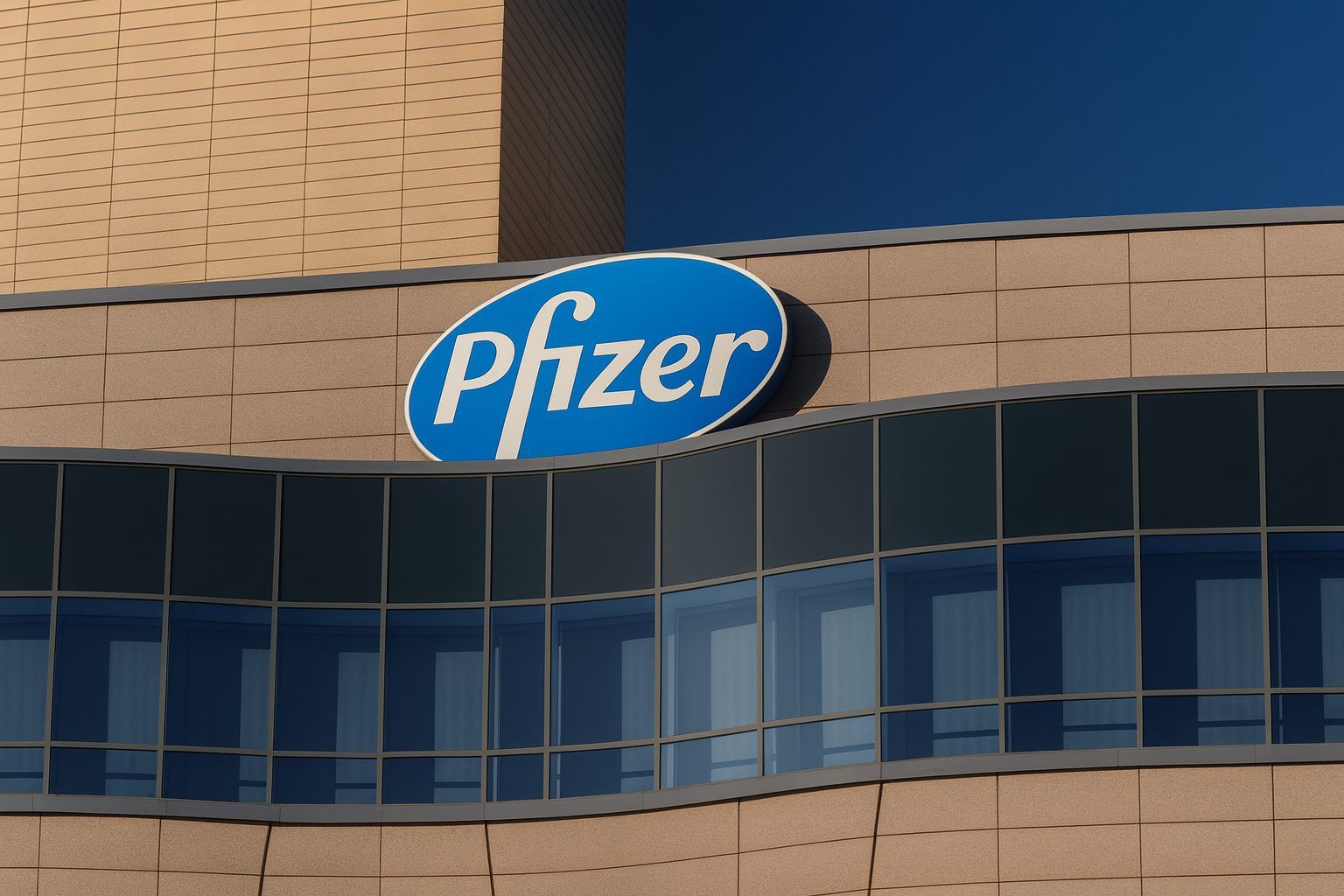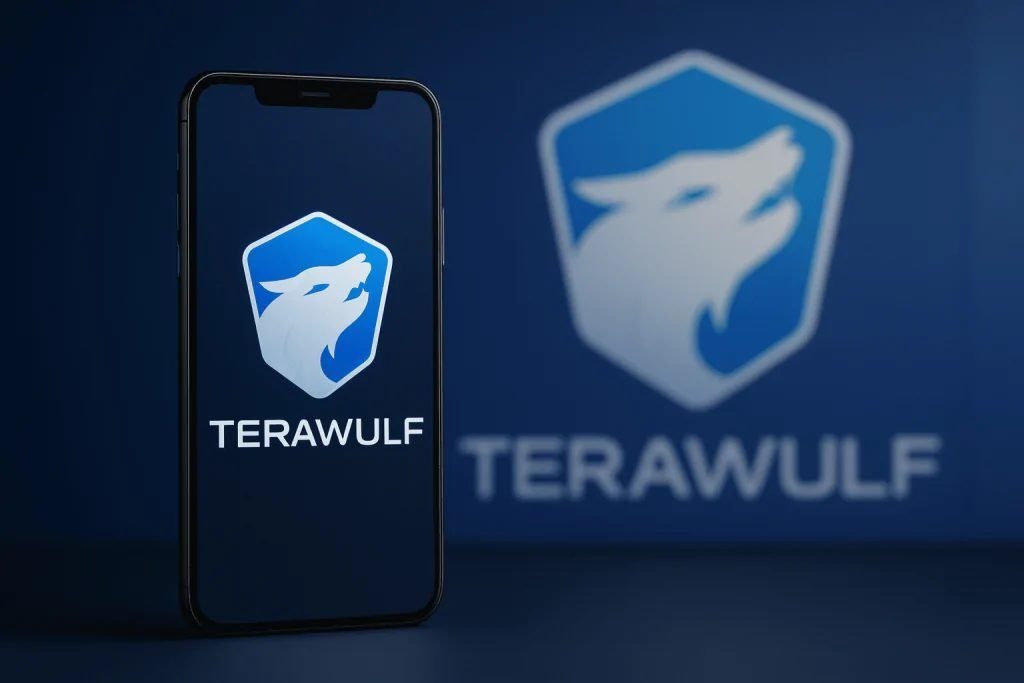Pfizer Inc. (NYSE: PFE) is back on many traders’ screens today. As of early afternoon on Tuesday, November 25, 2025, Pfizer shares are trading around $25.65, up roughly 1.7% on the session, after touching an intraday high near $25.96 and a low around $25.24.
That puts PFE stock in the middle of its 52‑week range between $20.92 and $27.69, with a market capitalization of roughly $143 billion. [1]
Behind the modest move higher lies a busy news backdrop:
- A completed multi‑billion‑dollar acquisition of obesity‑drug developer Metsera,
- A new FDA approval for PADCEV® plus Keytruda® in muscle‑invasive bladder cancer, [2]
- Heavy options activity clustering around the $25 strike, [3]
- And a still‑hefty dividend yield near 7% that continues to attract income investors. [4]
Below is a detailed look at Pfizer stock today, the latest catalysts, and what they could mean for PFE’s outlook.
Pfizer (PFE) Stock Price Snapshot for November 25, 2025
- Last price (approx.): $25.65
- Change (today): +$0.43 (about +1.7%)
- Intraday range: $25.24 – $25.96
- Market cap: ~$143B [5]
- 52‑week range: $20.92 – $27.69 [6]
- Trailing P/E ratio: ~13.4×
- Beta: ~0.5 (less volatile than the broader market) [7]
With the stock trading in the middle of its 12‑month range and at a low‑teens trailing P/E but single‑digit forward P/E around 8, Pfizer screens as a value‑oriented large‑cap pharmaceutical name rather than a high‑growth momentum play. [8]
Metsera Deal: Pfizer Re‑Enters the Obesity Drug Race
The biggest strategic story around PFE stock right now is obesity.
On November 13, 2025, Pfizer completed its acquisition of Metsera, an obesity‑focused biotech, in a transaction valued at up to $10 billion, including contingent value rights tied to pipeline milestones. [9]
Key details:
- The deal values Metsera at up to $86.25 per share (about $65.60 in cash plus up to $20.65 in milestone‑based payments). [10]
- Metsera’s lead candidate MET‑097i, a once‑monthly GLP‑1 injection, has shown up to ~14% weight loss in mid‑stage trials, potentially rivaling market leaders like Novo Nordisk’s Wegovy and Eli Lilly’s Zepbound. [11]
- Pfizer expects Metsera’s drugs to launch around 2028–2029, targeting the rapidly expanding obesity market, which analysts estimate could reach roughly $150 billion annually by the end of the decade. [12]
Why it matters for PFE:
- Pfizer previously shut down its own oral GLP‑1 obesity programs (lotiglipron and danuglipron) over liver safety concerns, leaving it without a competitive obesity franchise. [13]
- The company has warned that patent expirations between 2026 and 2028 could shave $17–18 billion per year from revenue, including losses on Eliquis, Ibrance and Xtandi. [14]
- Metsera gives Pfizer a late‑stage obesity pipeline that could help fill that gap and re‑position PFE as a serious contender in one of the most lucrative categories in pharma.
For PFE stock, the Metsera deal is a classic high‑risk, high‑reward bet: obesity drugs are a long‑dated opportunity (late 2020s), but success could materially reshape Pfizer’s earnings profile.
PADCEV + Keytruda: Oncology Momentum Beyond COVID
Today’s bullish narrative for PFE stock isn’t just about weight‑loss drugs. Pfizer continues to lean into oncology, where it now has the scale of its Seagen acquisition plus newer assets.
On November 25, 2025, Pfizer and partner Astellas announced that the U.S. FDA approved PADCEV (enfortumab vedotin) plus Keytruda (pembrolizumab) as a perioperative regimen for adults with muscle‑invasive bladder cancer who are ineligible for cisplatin chemotherapy. [15]
This builds directly on the EV‑303 (KEYNOTE‑905) Phase 3 trial, where PADCEV + Keytruda before and after surgery cut the risk of tumor recurrence, progression or death by about 60% compared with surgery alone, and halved the risk of death in early data. [16]
Why investors care:
- The approval opens an additional commercial indication for PADCEV, bolstering Pfizer’s oncology franchise and adding another non‑COVID growth driver. [17]
- It reinforces the story that Pfizer’s post‑pandemic future hinges on innovative cancer and specialty therapies, not just vaccines and antivirals.
For PFE stock, this is more incremental than transformational, but it’s the kind of steady pipeline progress Wall Street wants to see as the company navigates its patent cliff.
Q3 2025 Earnings: COVID Declines, Core Franchise Holds Up
Investors are still digesting Pfizer’s third‑quarter 2025 results, released in late October and discussed on the November 4 earnings call. [18]
Headline numbers:
- Q3 2025 revenue: $16.65 billion, down 6% year‑over‑year (‑7% operational). [19]
- Decline driven mainly by falling Paxlovid and Comirnaty sales as COVID‑19 demand normalizes and recommendations narrow. [20]
- Non‑COVID products like Eliquis, Vyndaqel and Nurtec ODT/Vydura delivered healthy double‑digit operational growth. [21]
- Adjusted EPS beat expectations at $0.87 vs. $0.79 consensus. [22]
Guidance:
- Pfizer reaffirmed 2025 revenue guidance of $61–64 billion. [23]
- It raised and narrowed adjusted diluted EPS guidance to $3.00–3.15, up from $2.90–3.10 previously, despite a one‑time $1.35 billion acquired R&D charge related to a 3SBio licensing deal. [24]
Capital allocation:
- In the first nine months of 2025, Pfizer returned $7.3 billion in dividends (about $1.29 per share) and did not repurchase stock, prioritizing debt reduction and business development instead. [25]
The takeaway for PFE is that Pfizer is slowly stabilizing after the COVID wind‑down. Growth from its core biopharma businesses plus pipeline launches, together with cost cuts, is helping offset the collapse in pandemic revenues—but the top line is still slightly shrinking for now.
PFE Dividend: Nearly 7% Yield, But a Tight Payout
One big reason Pfizer stock today continues to attract attention is its dividend:
- Current quarterly dividend: $0.43 per share
- Annualized: $1.72 per share
- Indicated yield: roughly 6.8% at current prices [26]
MarketBeat’s latest data pegs the payout ratio around 100% of trailing earnings, meaning almost all reported earnings are being paid out as dividends. [27]
What that means for investors:
- The yield is very attractive compared with the S&P 500 and even many other pharma peers.
- But the high payout ratio leaves little buffer if earnings disappoint—especially as patent expiries bite and Pfizer invests heavily in obesity, oncology and vaccines.
Several income‑focused outlets have recently debated whether Pfizer’s near‑7% yield is “still safe,” highlighting that management’s commitment to the dividend will be stress‑tested if the earnings recovery is slower than expected. [28]
Wall Street View: “Hold” With Moderate Upside
Analysts remain cautious but not bearish on PFE stock:
- MarketBeat reports an average rating of “Hold”, with 2 analysts at Strong Buy, 4 at Buy, 12 at Hold and 1 at Sell. [29]
- The consensus price target is about $28.39, implying high single‑digit to low double‑digit upside from current levels. [30]
- GuruFocus data suggests a similar target around $28.95, with a forward P/E near 8.1× at that level, underscoring a value‑style narrative. [31]
- Simply Wall St’s fair‑value estimate of $29.08 implies roughly 15% upside, depending on assumptions for revenue declines and margin improvement by 2028. [32]
In short, Wall Street largely sees Pfizer as undervalued but not without risk. The average view is that the current price already discounts much of the COVID hangover and patent cliff, but the company must execute flawlessly on obesity, oncology and cost discipline to unlock substantial upside.
Technical Picture: PFE Upgraded to Short‑Term “Buy Candidate”
From a technical perspective, PFE stock looks calmer than the headlines might suggest:
- As of the Nov. 24 close, PFE ended at $25.22, gaining 0.72% that day. [33]
- The stock has risen in six of the last ten sessions, up about 3–4% over the past two weeks, and trades in a broad horizontal range. [34]
- Technical research site StockInvest.us upgraded PFE from “Hold” to “Buy candidate” on Nov. 24, citing buy signals from both short‑ and long‑term moving averages, with expected trading between roughly $24.7 and $27.9 over the next three months under its model. [35]
- Key nearby levels include support around $24.85 and resistance near $25.50–25.50+, based on accumulated volume and Fibonacci levels. [36]
For active traders, that suggests limited near‑term downside but also a need for a strong catalyst to push decisively above the mid‑$20s range.
Options Market: Big Bets Cluster Around the $25 Strike
One notable feature of PFE trading today is heightened options activity:
- In the latest session, total listed options volume reached 62.3 million contracts across the market, with Pfizer among names showing particularly strong activity. [37]
- For PFE specifically, investors opened 43,000 weekly $25.01 puts expiring November 26, plus an equal number of January 2026 calls and puts at the same $25.01 strike—a sizeable position around the current share price. [38]
What that might mean:
- The pattern looks similar to a big hedged bet or volatility play (for example, a large straddle or other complex options strategy) that profits if PFE moves meaningfully away from the $25 area by early 2026.
- It reflects elevated interest in Pfizer’s near‑ to medium‑term path, likely tied to the Metsera integration, future obesity trial data, and progress on oncology launches.
Options flow doesn’t give a clear bullish or bearish verdict, but it does underscore that institutional investors are positioning for movement, not complacency, around this price zone.
Key Risks for PFE Stock
Despite the positive headlines, Pfizer stock still carries meaningful risks:
- Patent Cliff (2026–2028)
Pfizer estimates $17–18 billion in annual revenue is at risk from patents expiring on key drugs like Eliquis, Ibrance and Xtandi over 2026–2028. [39]- If obesity and oncology launches slip or underperform, earnings could come under pressure even with cost cuts.
- COVID Normalization
Q3 results already show a sharp decline in Paxlovid and Comirnaty revenues, which had previously supported outsized earnings during the pandemic. [40]- COVID demand may continue to shrink or become more seasonal, leaving Pfizer more reliant on its traditional franchises and pipeline.
- Regulatory and Safety Risks
- In early 2025, the FDA required a Guillain‑Barré Syndrome (GBS) warning in labeling for RSV vaccines, including Pfizer’s ABRYSVO. [41]
- Any safety signals or label changes in key vaccines or oncology drugs could slow adoption or invite litigation.
- Execution Risk on Metsera and Other Deals
- Metsera’s MET‑097i is still moving into late‑stage trials; obesity is a highly competitive space dominated by Eli Lilly and Novo Nordisk. [42]
- Pfizer must integrate Metsera effectively while balancing debt, R&D spending and shareholder returns.
- Dividend Sustainability
- With a payout ratio near 100%, any sustained dip in earnings could trigger market worries about a potential dividend cut, which would likely hit sentiment hard. [43]
PFE Stock Outlook: Who Might Consider Pfizer Today?
Given all of the above, how does PFE stock stack up for different types of investors?
More likely to appeal to:
- Income‑oriented investors who prioritize high yield and relative stability over fast growth, and who are comfortable with the risk that the dividend might someday be trimmed if earnings weaken.
- Value investors looking for a large‑cap healthcare name trading at a low forward P/E with meaningful upside optionality from obesity and oncology if management executes. [44]
More cautious for:
- Growth‑first investors who want near‑term double‑digit revenue growth and clean secular tailwinds—Pfizer’s top line is still flat to slightly declining as it transitions away from COVID revenue. [45]
- Short‑term traders hoping for explosive moves; technicals currently suggest a broad trading range rather than an imminent breakout, despite some upbeat commentary (for example, Jim Cramer recently said PFE “can be near a breakout,” but the chart has yet to confirm a decisive move). [46]
Bottom Line on PFE Stock Today (Nov. 25, 2025)
On November 25, 2025, Pfizer shares are grinding higher, supported by:
- A completed Metsera acquisition that thrusts Pfizer back into the race for obesity treatments,
- A new FDA approval for PADCEV plus Keytruda that strengthens its oncology story,
- Solid Q3 execution with raised EPS guidance, and
- A near‑7% dividend yield that remains a powerful magnet for income investors.
At the same time, patent expirations, COVID revenue erosion, and dividend sustainability remain front‑of‑mind risks. The options market and technical signals suggest investors are cautiously optimistic but aware that Pfizer’s next few years will be a complex transition period.
As always, this article is for information and news purposes only and is not financial advice. Anyone considering PFE stock should evaluate their own risk tolerance, investment horizon, and financial situation, and consider consulting a qualified financial professional before making decisions.
References
1. stockinvest.us, 2. simplywall.st, 3. www.gurufocus.com, 4. www.marketbeat.com, 5. stockinvest.us, 6. stockinvest.us, 7. www.marketbeat.com, 8. www.gurufocus.com, 9. www.reuters.com, 10. www.reuters.com, 11. www.reuters.com, 12. www.reuters.com, 13. www.reuters.com, 14. www.reuters.com, 15. simplywall.st, 16. s206.q4cdn.com, 17. simplywall.st, 18. s206.q4cdn.com, 19. s206.q4cdn.com, 20. s206.q4cdn.com, 21. s206.q4cdn.com, 22. www.marketbeat.com, 23. s206.q4cdn.com, 24. s206.q4cdn.com, 25. s206.q4cdn.com, 26. www.marketbeat.com, 27. www.marketbeat.com, 28. www.fool.com, 29. www.marketbeat.com, 30. www.marketbeat.com, 31. www.gurufocus.com, 32. simplywall.st, 33. stockinvest.us, 34. stockinvest.us, 35. stockinvest.us, 36. stockinvest.us, 37. www.gurufocus.com, 38. www.gurufocus.com, 39. www.reuters.com, 40. s206.q4cdn.com, 41. www.fda.gov, 42. www.reuters.com, 43. www.marketbeat.com, 44. www.gurufocus.com, 45. s206.q4cdn.com, 46. finviz.com







